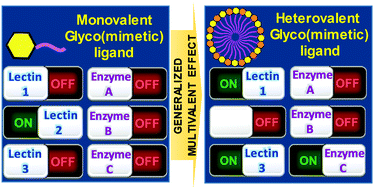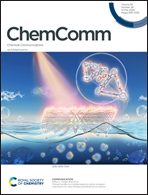Carbohydrate supramolecular chemistry: beyond the multivalent effect
Abstract
It has been amply constated that sugar ligand multivalency increases lectin-binding avidities dramatically, thereby modulating the capacity of carbohydrates to participate in supramolecular recognition processes involving transfer of biological information. The importance of this concept, the multivalent or glycoside cluster effect, in cell biology in general and in the glycosciences in particular is reflected in the ever-growing number of papers in the field. An impressive range of glycoarchitectures has been conceived to imitate the glycan coating of cells (the glycocalyx) in order to target complementary lectin receptors. However, these models rarely address the heterogeneity and the fluidity of the densely glycosylated cell membrane. They also disregard the impact that high-density nanosized arrangements could have in their interactions with the whole spectrum of carbohydrate-interacting proteins, among which glycosidases are notable representatives. For many years it has been tacitly assumed that: (i) efficient recognition by lectins generally requires high densities of the putative primary ligand and (ii) the mechanisms governing binding of a carbohydrate motif by a lectin or a glycosidase are totally disparate. Notwithstanding, an increasing amount of evidence seriously questions this paradigm. First, it was shown that secondary “innocent” ligands can play important roles in the recognition of heteroglycocluster constructs by lectins through synergistic or antagonistic contributions, a phenomenon termed the heterocluster effect. Second, the existence of multivalent effects in the inhibition of certain glycosidases by glycomimetic- and, even more disturbing, glyco-coated architectures (multivalent enzyme inhibition) was demonstrated. These observations call for a generalized multivalent effect governing the supramolecular chemistry of carbohydrate or glycomimetic structures in a biological context, with (hetero)multivalency acting as a multimodal switcher to drive the encoded information through different pathways. In this Feature Article we review the advancements made in the last few years in our understanding of the mechanisms underpinning the generalized multivalent effect, with an emphasis on the potential risks and opportunities derived from (hetero)multivalency-elicited promiscuity.



 Please wait while we load your content...
Please wait while we load your content...